Wouldn't it be great to have your own source of beans in the garden? If you're wondering whether you can grow beans and chickpeas from dried or even fresh beans, well, you've come to the right place. We are here to tell you the answer and so much more which are all based on hours of research.
You can grow beans and chickpeas from either dried or fresh beans. The germination period may vary based on several factors including the bean type but there's no reason they won't grow with proper care and an appropriate growing environment. Under ideal conditions, your beans including chickpeas could sprout in just 7 days.
There's the answer but we recommend that you stay to learn more about chickpeas and the proper way to sprout them. We will also give you tips you can use from sowing to harvest.
![fresh uncooked chickpeas on a brown wooden bowl, close up photo, Can You Grow Beans And Chickpeas From Dried Beans? [Or Fresh!]](https://gardentabs.com/wp-content/uploads/2022/07/Can-You-Grow-Beans-And-Chickpeas-From-Dried-Beans-visuals.png)
Can You Grow Beans And Chickpeas From Dried Beans? [Or Fresh!]
Before jumping deeper into sprouting beans, it makes sense if you know your beans. For now, let us tell you something about chickpeas. While not required, we will break it to you anyway - chickpeas are not beans. And nor they are peas.
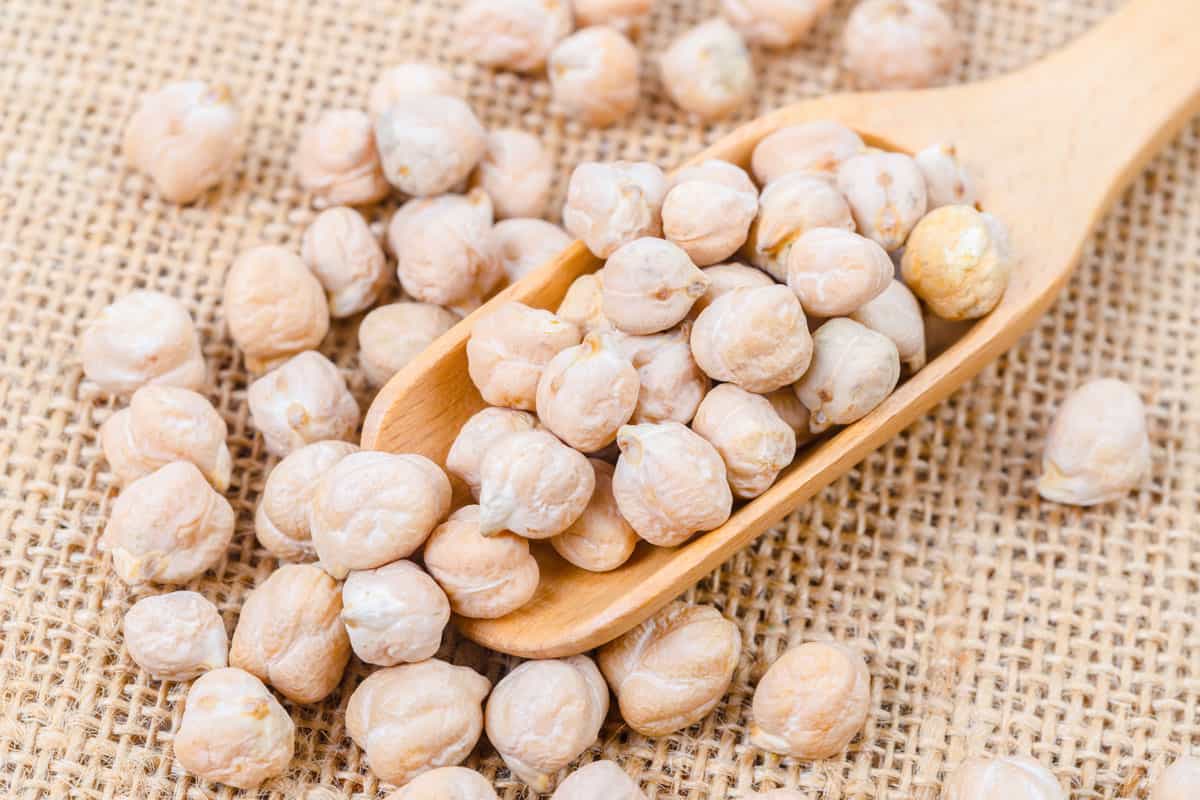
Also called garbanzos, chickpeas are commonly regarded as beans but they are a bushy annual legume that can grow to a height of 18 inches at full maturity. This makes the plant an ideal candidate for container gardening.
Garbanzos or chickpeas have dark green leaves that come in pairs, whereas each of its beans is enclosed in a pod.
The annual legume is a good source of protein and dietary fiber as well as calcium, magnesium, vitamin C, and other vitamins and minerals. If you are looking for a good addition to your vegetable garden, there's no way you would go wrong with garbanzo beans.
Growing Requirements of Chickpeas
Most beans are warm-season crops but chickpeas grow best in the cold season. Their growth is optimal when the daytime temperatures range between 7o and 80 degrees. At night, they can tolerate temperatures as low as 65 degrees.
While some beans can tolerate slightly acidic soil, chickpeas need neutral soil that drains well and contains lots of organic matter to grow. However, you should avoid soil that contains high levels of nitrogen. Too much nitrogen promotes green leafy growth instead of seed production. But like most plants, chickpeas need phosphorous and potassium to grow healthy.
Chickpeas may be planted directly on the garden bed or in containers but it is important to pick an area that receives enough sunlight. They need at least 6 hours of full sun for locations with cold climates while dappled or filtered sunlight will be just enough for the chickpeas if you live in the warmer regions.
Like beans, garbanzo seedlings need moist soil. You should water them as needed and keep the first inch of soil moist at all times. Yet again, remember to choose soil that drains well or your seedlings will rot if the roots remain soaking wet for long periods.
View this galvanized watering can on Amazon.
It is not recommended to reuse soil for seeding. You can improve the soil quality by adding compost, manure, or other organic matter. While this is a big help to your seedlings as they kickstart growth, they also need additional nutrition throughout the growing season. Use a fertilizer according to their needs to support their growth.
How to Grow Beans and Chickpeas From Dried Beans
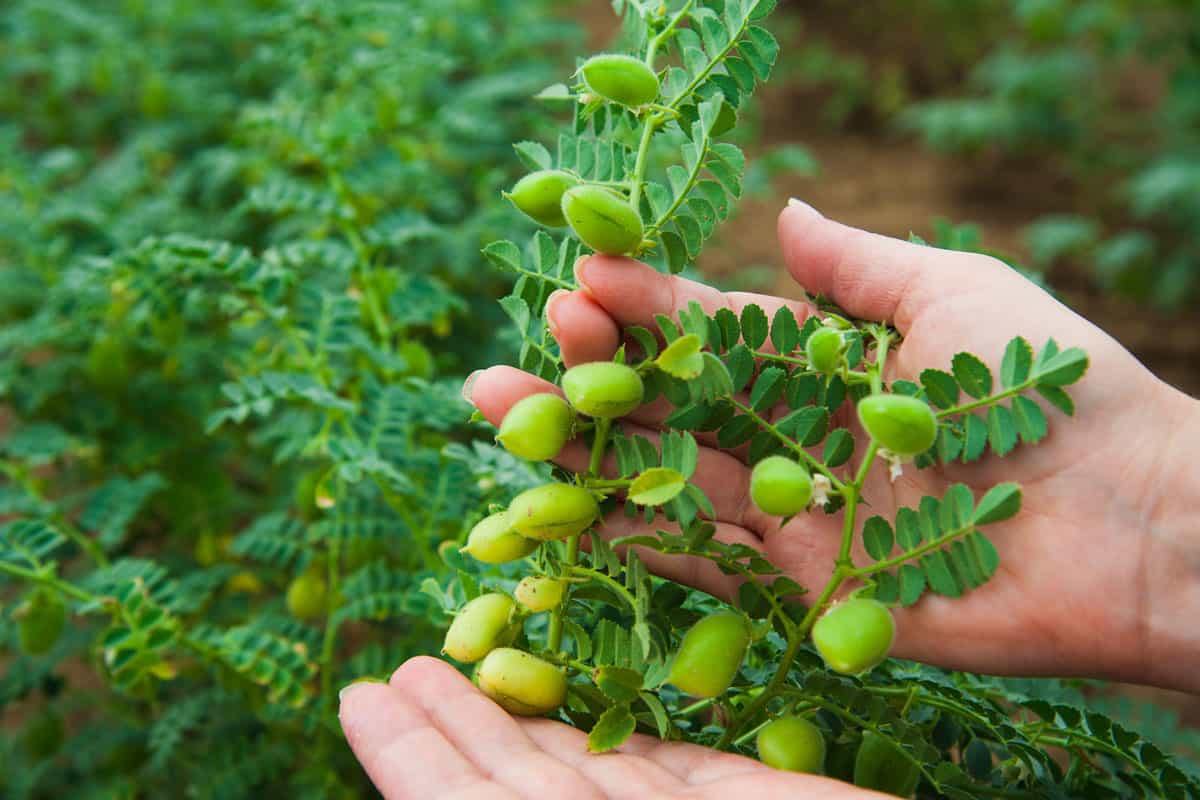
Plant dried garbanzo beans 2-4 weeks before the end of the frost season. This increases the chance of sprouting more seeds as chickpeas are cold-season plants. You might find it difficult to get garbanzo seeds in grocery stores but your best bet is to order online.
Moving on, it is recommended to start planting garbanzo beans indoors and transfer only when the plant stands 4 inches tall. You may use egg shells, peat, or paper pots to easily transfer the seedlings later. Note that chickpeas have a taproot system, which means they have shallow roots that are extremely delicate during their early stages.
If you are growing chickpeas for the first time, no worries. This guide will help you get a bountiful yield in approximately 100 days.
If you are growing another type of bean, these procedures may apply as well but take some time to know its specific needs. Remember that chickpeas love the cool climate, and therefore, you would need to adjust the planting date, soil temperature, and other specific requirements.
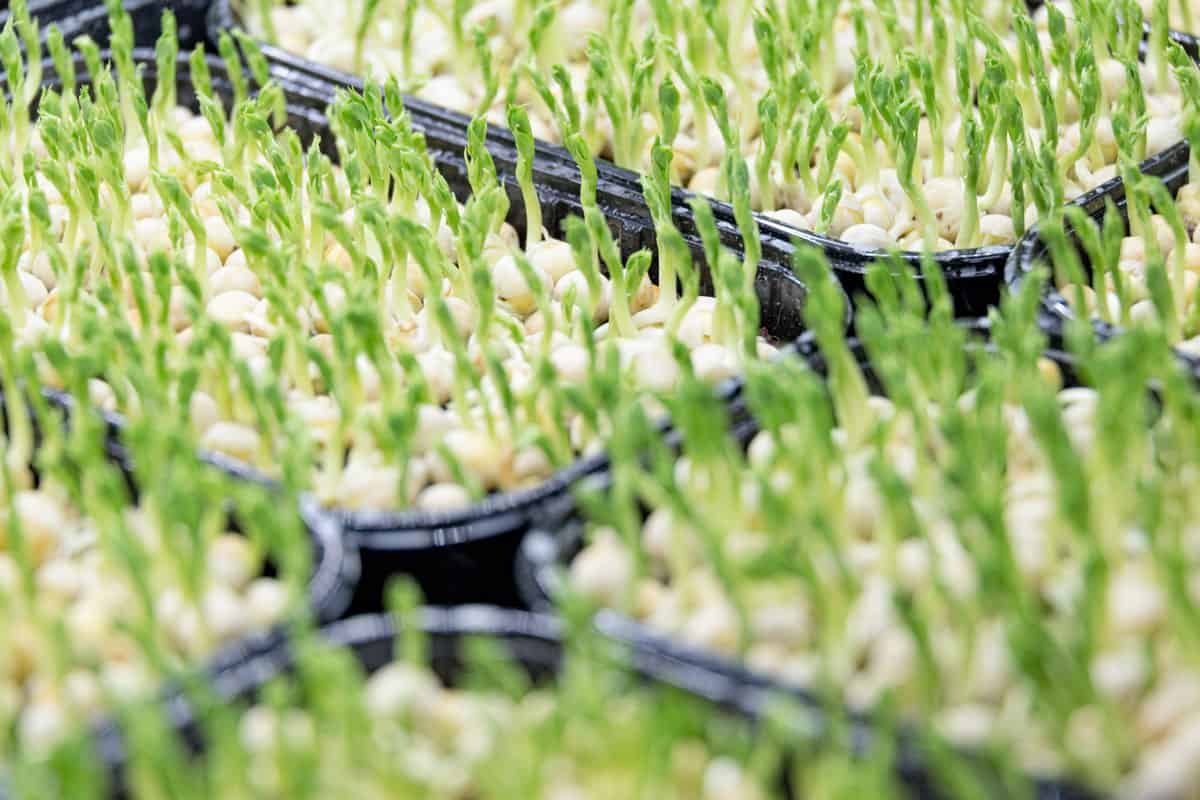
1. Prepare the soil.
Before tilling the soil, check that its temperature is in the ideal range for growing chickpeas. It should be around 50 degrees Fahrenheit. Next, till the soil to break up large chunks and add organic matter such as compost to improve the nutritional value. Water the soil before planting the beans.
2. Sow and allow proper spacing.
Plant the seeds half an inch deep in paper pots and transfer once the seedlings are 4 inches tall or have at least 4 true leaves. If planting on the garden bed, you will need to thin the seedlings later, allowing at least 6 inches of space in between. Rows should be 2 feet away from each other.
View these biodegradable planting pots on Amazon.
3. Keep the soil moist.
Water after sowing and consistently keep the first inch of the soil moist on the succeeding days. Your beans should begin to germinate within 7-15 days.
4. Feed and cultivate.
Remember to feed your chickpeas with fertilizer that has potassium and phosphorous but does not contain high nitrogen value. Avoid giving too much fertilizer though as this can lead to burning. Cultivate the soil around the chickpeas to allow air to circulate but be careful not to touch the roots.
Growing Beans and Chickpeas From Fresh Beans
You would probably wonder if it's all possible to grow beans and chickpeas from fresh beans. The answer is yes. While most plants need their seed to be dry before sowing, some perennials and cold season crops grow even from fresh beans.
It is worth mentioning, however, that using dry seeds for sowing is the general recommendation. Drying the seeds allow them to fully cure and improves their resistance to rot and diseases.
That being said, you may not get as many seeds to germinate when you sow fresh seeds.
Harvesting Chickpea Beans
With optimal growing conditions, you should be able to harvest your chickpeas in just 100 days. To harvest chickpeas is simple. On a household scale, you can just use bare hands to harvest the pods. Separating the beans from the pods is what takes some time though.
If you want to enjoy them fresh, then simply harvest them while green. If you want dried chickpeas, then you can wait a little longer until the plants die and wither before collecting the brown pods. Wait for the pods to split which indicates that the chickpeas are already dry.
How Many Chickpeas Does One Plant Produce?
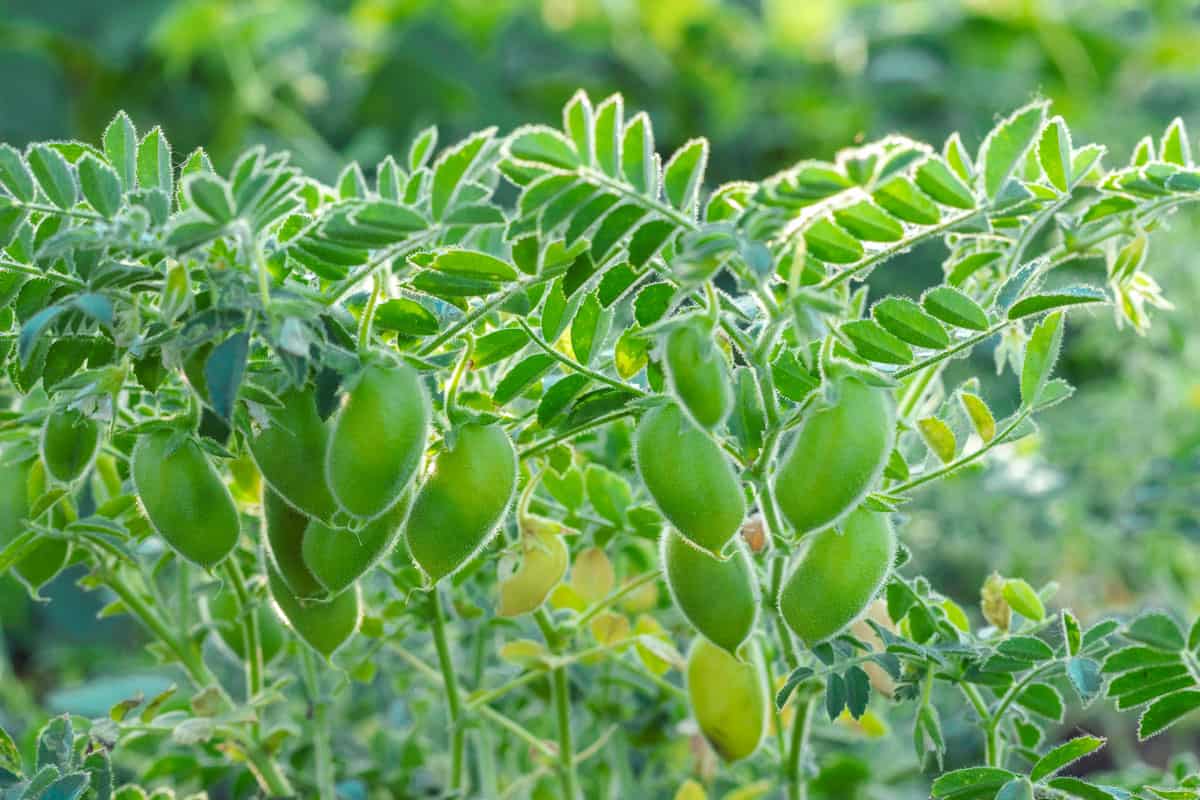
Each chickpea plant produces 3 pods on average. Within each pod, the yield could be 1 or 2 beans. To calculate how many chickpea plants you need to feed the household, allocate at least 4 chickpea plants for every household member.
To have more supply, you may plant twice as many chickpea plants. You can store fresh chickpeas in the fridge for up to 4 days.
Can You Grow Chickpeas Indoors?
It is best to start chickpeas indoors as the plant is tender during its early life. The shallow root system is another concern, which needs delicate care. However, their ideal environment until full maturity is outdoors. Chickpeas need full sun, at least 6 hours a day for optimal growth and yield.
Do Chickpeas Need a Trellis?
Chickpeas do not need a trellis. They are flexible and will most likely bend as they grow taller, but in general, they do not require a trellis. Planting the chickpeas with a 6-inch spacing is the recommendation so they could provide support for each other as they mature.
Check out this 24-inch bamboo trellis on Amazon.
Using a trellis is a matter of personal preference. If you feel your chickpeas need additional support, then you may set up a trellis.
Final Thoughts
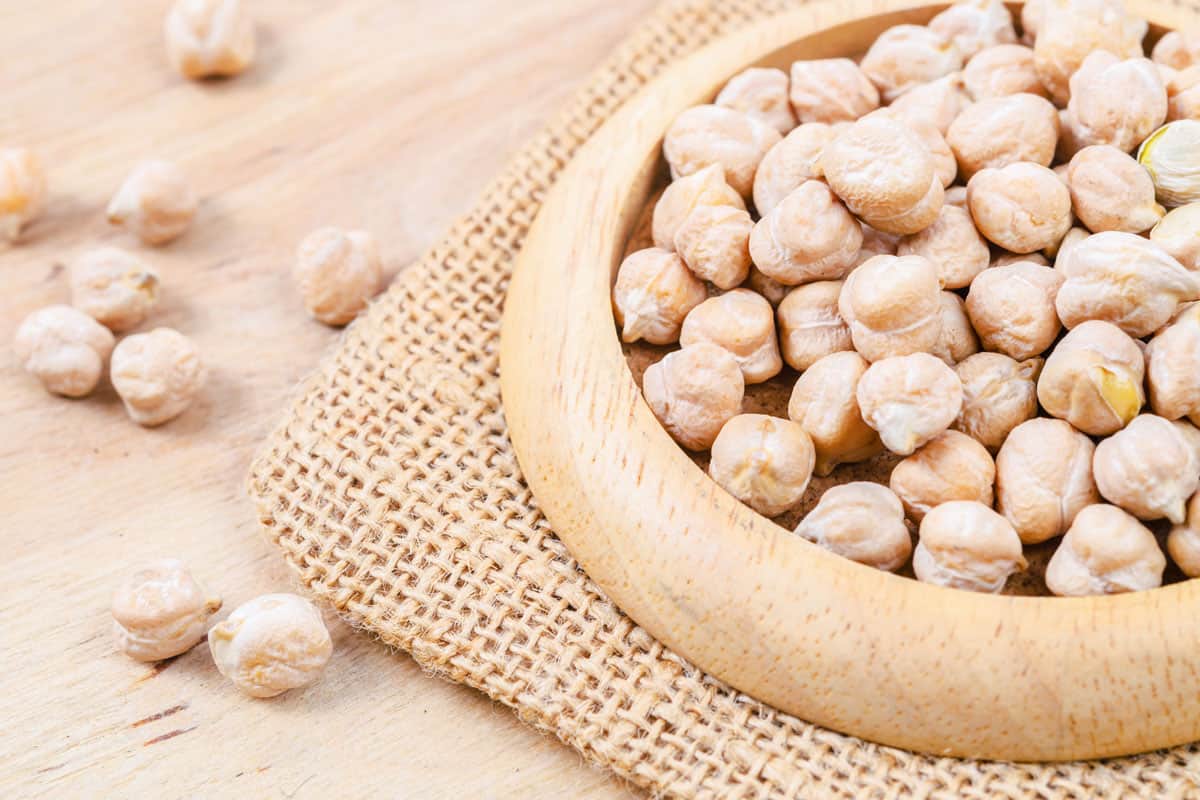
You can grow chickpeas and beans from either fresh or dry beans but remember that your choice of beans identifies its growing requirements. While it is best to grow most beans using dried beans, you can still grow chickpeas from fresh beans especially because they are cold-season plants. You should know your plant first before sowing.
If you find this post helpful, then you might also want to read the following:



